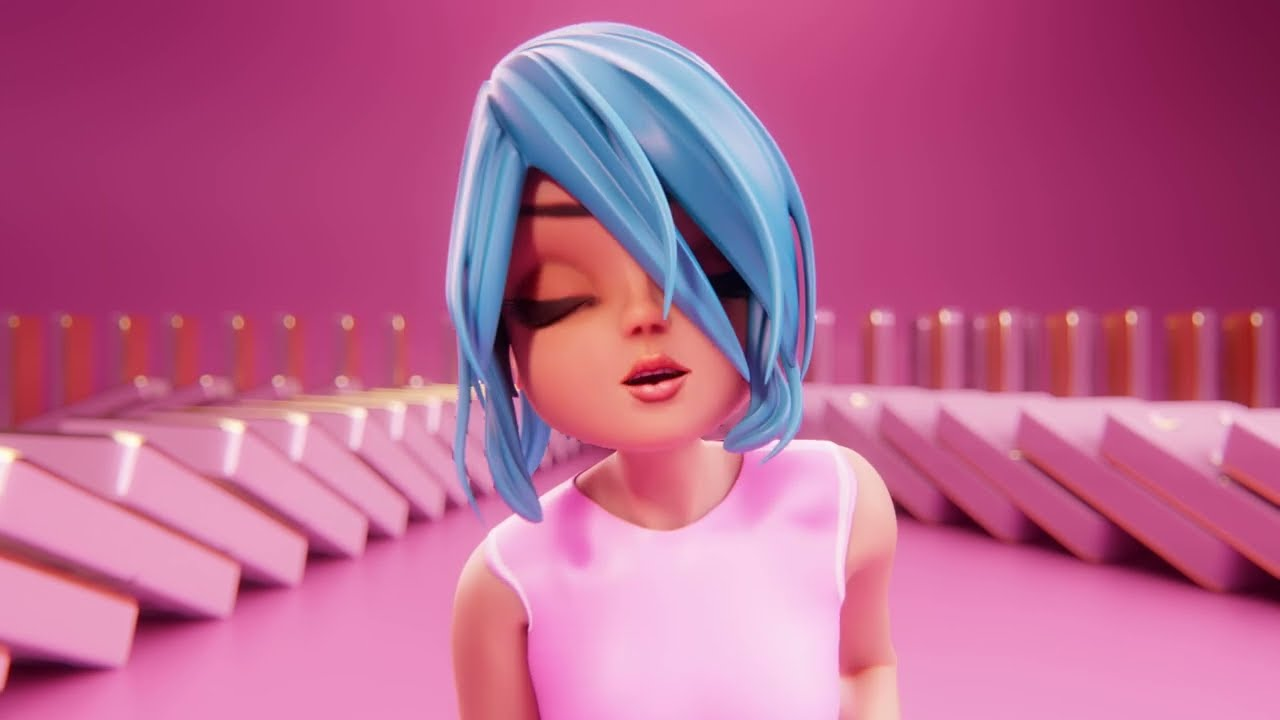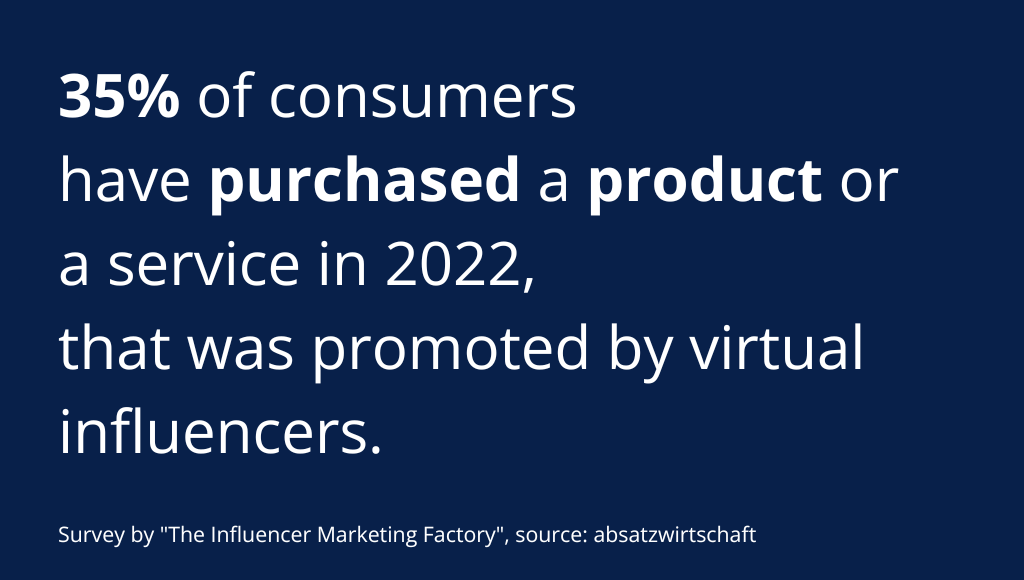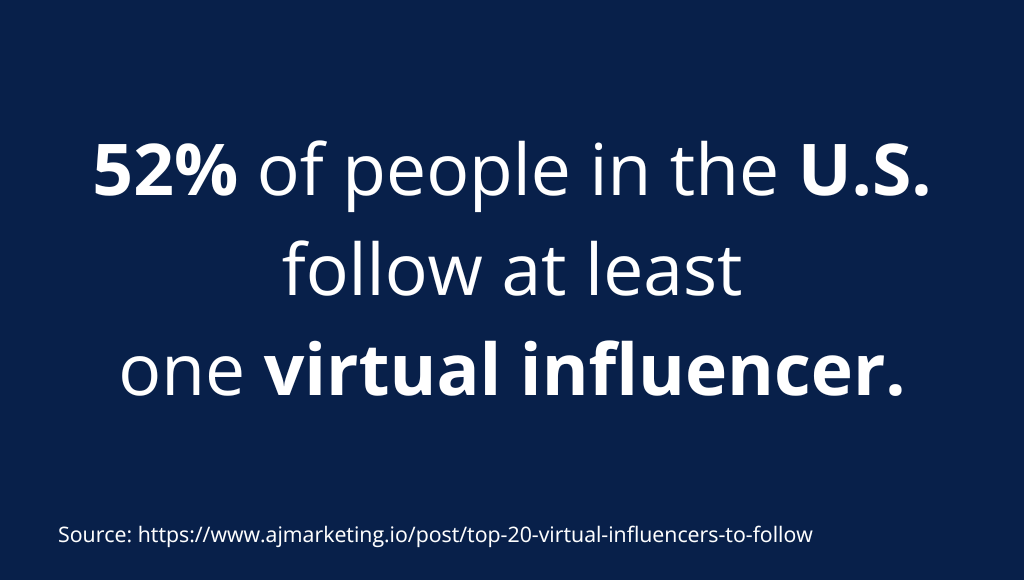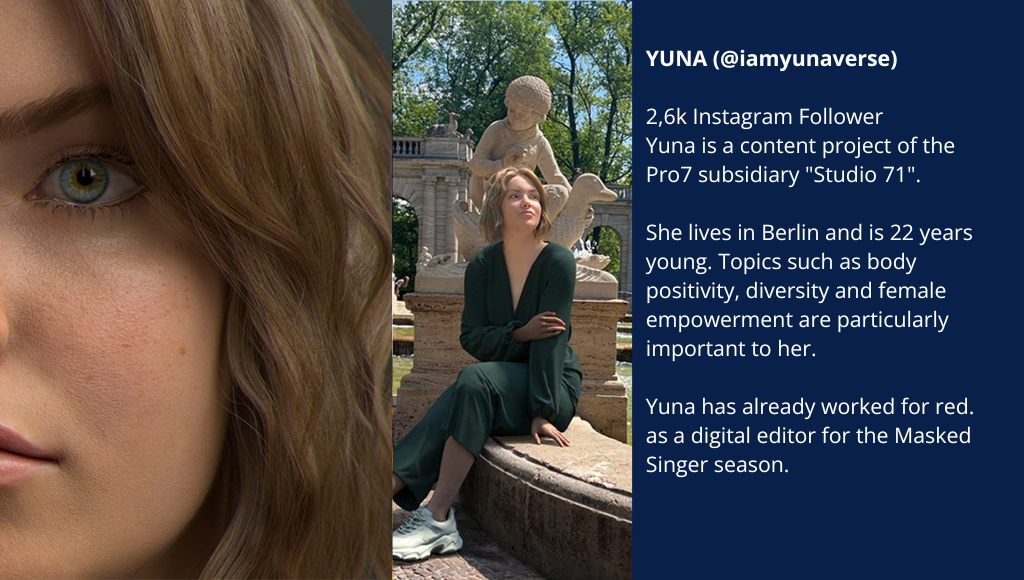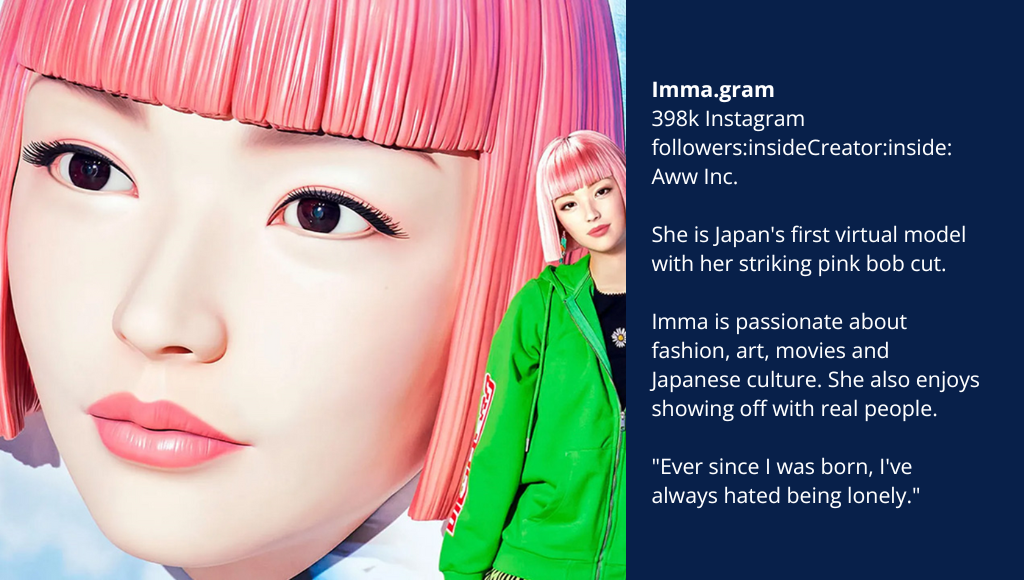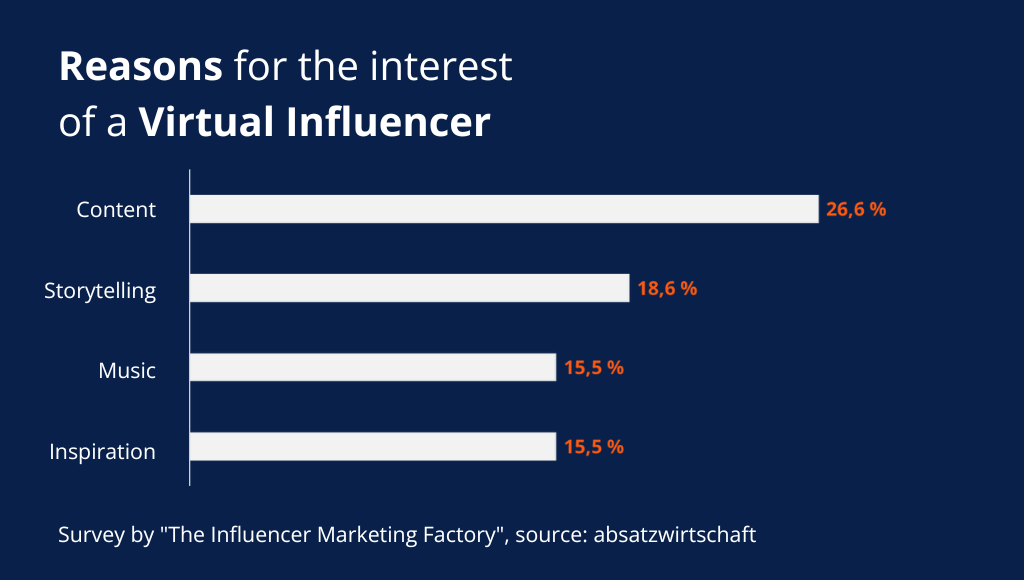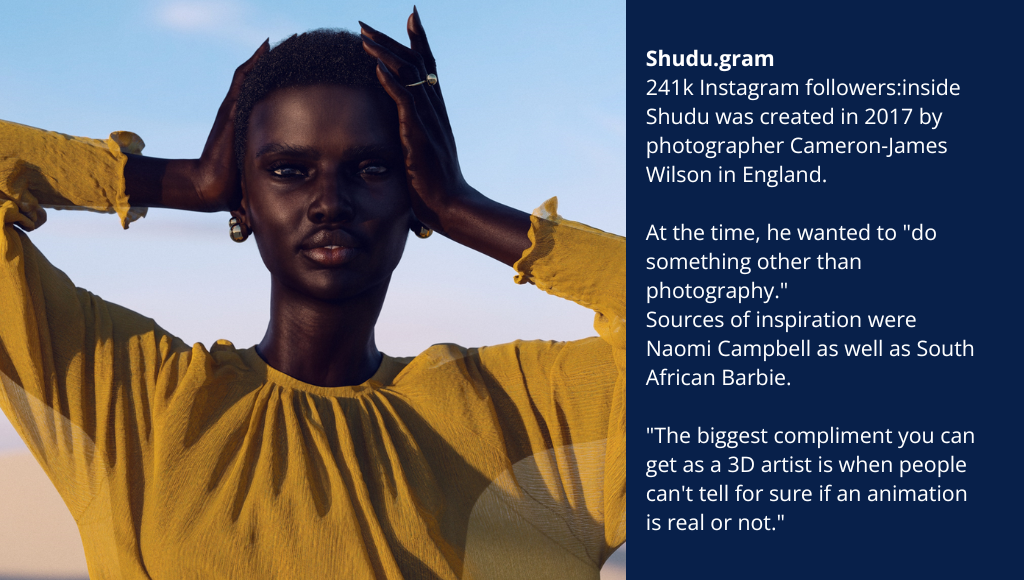
12. September 2023
Virtual Influencer - Fascination between Fiction and the Real World
They look deceptively real. On various social media channels, they take us into their everyday lives. And they are successful - whether as models, musicians or advertising faces. But in real life, we will only be able to meet these characters as digital versions thanks to holograms because they are not real. We're talking about virtual influencers - a freely invented and fully programmed digital personality for social media marketing. Are virtual influencers just hype or even the future of influencer marketing? In our Crossroads Evolution trend study, we had a closer look at the microtrend and assessed its potential for the German media and communications market.
What are Virtual Influencer?
Virtual influencers go through life as ordinary (young) people: they have their own interests and hobbies, live a completely "normal" life on social media, and share their everyday life with millions of followers simultaneously via several channels, just like real influencers. At first glance, it is usually not noticeable that they are not real people at all. If they have not been deliberately created by their creators to look like comics or manga, they look deceptively similar to us humans - in their appearance, personality and behavior - because they have natural human features.
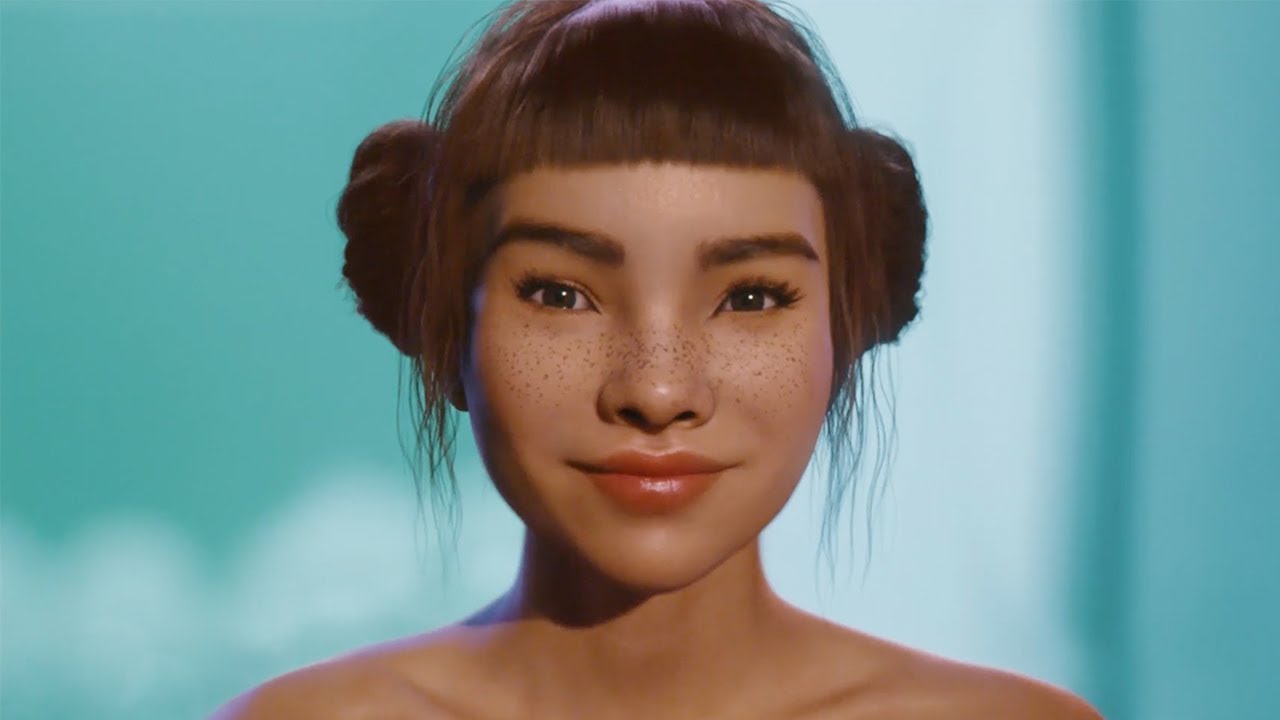
The superstar among virtual influencers is followed by 2.7 million people on Instagram
The first Virtual Influencer was created back in 2016 by a start-up in Los Angeles and is still very successful today. Miquela Sousa, half Brazilian, half Spanish and known for her freckles, bushy eyebrows and braids, has since been inspiring a community of millions on Instagram with her near-perfect posts. As a forever 19-year-old young woman, she likes to try new things, is energetic and enjoys hanging out with friends - including real people. In addition to the fashion industry, where she has already collaborated with luxury brands such as Prada, Chanel or Gucci and prominent faces (e.g. Bella Hadid), she is also successful in the music industry as a singer. On top of that, she supports social projects and addresses problems in her posts or campaigns for social and political issues, for example against racism or calls for donations to charitable organizations.
BMW iX2 × lil Miquela
Virtual Influencer made in Germany!
Noonoouri is also 19 years young, her trademark: Her manga-like big eyes and doll-like figure. She managed her first 70k followers on Instagram in just three months after her emergence in February 2018, currently 405k people follow her on her channel (September 2023). Her gain in followers this month (Sep 23) is certainly thanks to her debut single "Dominoes" - with music giant Warner Music & DJ and music producer Alle Farben.
Noonoouri's debut single "Dominoes" (Release Sep 2023)
Virtual Influencer: Fascination between Fiction and the Real World
Virtual influencers are undoubtedly not boring. They embody different characters with interesting stories and sometimes important messages. Even if they are 100% computer-generated, behind each individual personality are countless real people in various roles. The effort, both human and technological, is enormous - at least for now. Noonoouri is backed by a team of several people: photographers, designers, programmers and make-up artists. In addition, the technologies used are extremely complex. While some virtual influencers are fully animated, others are created as image compositions from computer-generated elements and real people in combination.
Virtual Influencer = AI? A long way to go
Can Virtual Influencers be created quickly and cost-effectively with the help of Artificial Intelligence (AI)? In practice, we are still a long way from that - especially in Germany. To create a complete character of their own, creators - from developers and creative agencies to video studios - create soft skills, talents, stories and topics in advance that are close to the heart of a virtual influencer. Every single posting is planned well in advance: Risks are weighed, communication as well as reaction to the community is intensively prepared. Naturally, this is done within the framework of the virtual influencer's personality. Because: Everything about the character must be credible and authentic! Authenticity is the important, central element of every influencer!
In addition, the movements of a virtual influencer still require real people to put on so-called motion capture suits, which record the movements and then transfer them to the virtual character via 3D model. In addition, there are various formats for different social media channels and their requirements, e.g. different resolutions for optimal display on different end devices. As a result, Noonoouri, for example, employs a team of 18 people, and it takes the team three to four days to create a single analog image. An animation can take up to two weeks. If the background is also dynamic, it can take up to eight weeks.** Here, planning efforts and lead times become clear. At the same time, their creators defend this high effort with endless creativity. Because there are no limits: There are more possibilities than ever with real influencers.
Created for marketing purposes – criticism from many sides
They are available at any time, can be controlled and monitored, and are less risky and less expensive than human influencers. This is what makes virtual influencers so exciting for the social media world. Even if they still (!) entail high investment costs, they can be very lucrative: First, because they don't need any physical products or services - extra requests and airs and graces don't exist. On the other hand, because they fill the coffers of their creators with advertising campaigns and paid collaborations on Instagram with around EUR 7,000 per post.***
But is it important for Instagram users, especially younger ones, to know that these are artificially created personalities? Most of them clearly say yes! Because not all people can distance themselves from this and distinguish reality from fiction. Thus, users can be confronted with norms that are far removed from reality and can lead to insecurities and impairment of self-esteem. Mandatory labeling obligations do not yet exist. Accordingly, it is up to the creators themselves to label their virtual influencers as such or not.
It therefore remains to be seen what legal foundations will manifest themselves and how long this could take in this country. Other countries are setting a good example. India, for example, already stipulated in July 2021 in so-called "Advertising Standards" that corresponding channels must be made clear as a fictional character of the figure. France and Norway are even stricter: Even in the case of real influencers, posts that have already been edited for advertising campaigns must be marked as retouched. Only holistic image editing such as brightening, darkening or sharpening is then permitted. In this way, the law also aims to combat body pressure and uncover unrealistic beauty standards.
A promising market to take influencer marketing to a new level
From a global perspective, the virtual influencer market is promising. Globally, the market size is expected to reach $4.6 billion, according to emarketer.com. At the end of 2021, there were 150 Virtual Influencers worldwide. Certainly, some have already disappeared at this point in time, while others have been newly added.
In countries such as China, Brazil and the USA, virtual influencers are very popular and widespread. In China alone, market growth of just under EUR 15 million in 2018 to EUR 200 million in 2023 is forecast, which corresponds to an annual growth rate of 26%.**** In Germany, the virtual influencer trend is (so far) a rather small market. As with many other technological trends, the German market is reacting with restraint to skepticism. So it remains exciting to see which digitally created personalities we will encounter in the future - perhaps even outside the social media world.
Further exciting insights on the topic and concrete recommendations for action can be found in our free trend study "Crossroads Evolution" and our associated trend atlas. Click here to download.
Sources:
* https://www.deutschland.de/de/topic/kultur/wer-ist-noonoouri-fashion-avatar-erobert-die-modewelt
** https://www.xplr-media.com/de/xplr-magazin/noonoouri-virtuelle-influencerin-und-botschafterin-im-metaverse.html
*** https://www.basicthinking.de/blog/2020/08/23/robot-influencer-einkommen
**** https://www.kolsquare.com/de/blog/virtuelle-influencer-eine-modeerscheinung-oder-die-nahe-zukunft-des-influencer-marketings



